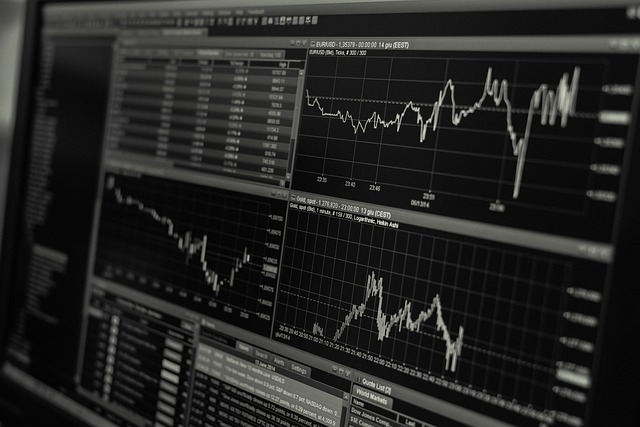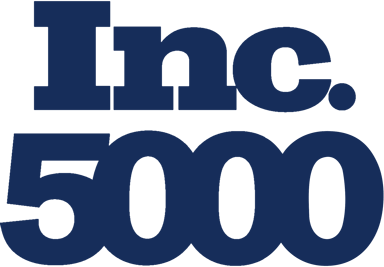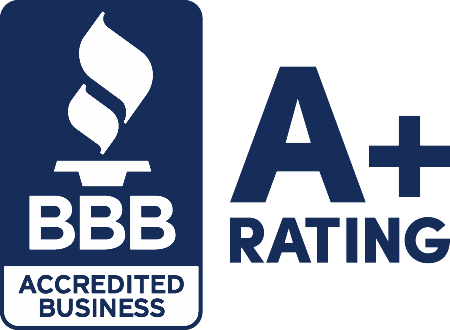What are NAICS & SIC Codes?

SIC codes are four-digit numerical codes that categorize U.S. companies by their industries. Introduced in 1937, these codes were initially developed for statistical data collection but are now widely used for credit evaluation and industry classification.
They allow lenders to assess a business’s risk level, which can influence loan approvals and terms. For example, a company categorized under a high-risk SIC code may struggle to secure favorable funding, whereas a low-risk SIC code can enhance creditworthiness.
Definition of SIC Codes
The Standard Industrial Classification (SIC) system was created to streamline business classification for analysis and reporting. These codes group businesses based on their primary activities, making it easier for government agencies, lenders, and researchers to understand industry trends and risks. For instance, SIC code 5812 represents Eating Places, covering various food service businesses such as restaurants and cafes.
Importance of SIC Codes in Business Financing
SIC codes are pivotal in business financing, as lenders use them to evaluate creditworthiness and assess risk levels. A low-risk SIC code can facilitate loan approvals, better interest rates, and access to merchant accounts. For example, a company under SIC code 8742 (Management Consulting Services) is considered relatively low-risk compared to SIC code 6531 (Real Estate Agents).
Conversely, businesses in high-risk industries, such as those with SIC code 6221 (Commodity Brokers), may face stringent lending criteria due to market volatility and other inherent risks. However, businesses can create targeted marketing campaigns by effectively categorizing and prioritizing their customer databases using SIC codes.
How SIC Codes Affect Business Credit
SIC codes significantly influence business credit scores. Companies with high-risk SIC codes might experience difficulty securing loans, face higher interest rates, or have limited funding options. Conversely, businesses with low-risk SIC codes often benefit from improved credit scores, better financing terms, and enhanced business opportunities.
For example, a company operating in SIC code 5044 (Office Equipment) will likely receive more favorable terms than a business in SIC code 7999 (Miscellaneous Amusement and Recreation Services).
SIC Codes vs. NAICS Codes: A Comparison
Introduced in 1997, NAICS codes provide a modern, detailed classification system that aligns with international standards. Unlike the older SIC codes, NAICS codes use a six-digit system and cover a broader range of industries.
- SIC codes are primarily used in the U.S. for credit evaluation and classification.
- NAICS codes are more comprehensive, making them ideal for statistical analysis and global comparisons.
- For instance, a business classified under SIC code 5411 (Grocery Stores) may have a corresponding NAICS code 445110 (Supermarkets and Other Grocery Stores).
Key Differences Between SIC and NAICS Codes
While both systems aim to classify industries, there are notable differences:
- NAICS codes offer greater specificity, allowing for detailed analysis of niche markets.
- SIC codes are simpler and better suited for credit evaluation purposes.
- Government agencies widely use NAICS codes for data collection, whereas SIC codes remain relevant for business credit assessments.
When to Use SIC Codes vs. NAICS Codes
Understanding when to use SIC or NAICS codes is crucial for business planning and financing. For example:
- Use SIC codes for industry classification and credit evaluation.
- Use NAICS codes for data collection, analysis, and global comparisons.
- Employ both systems to understand your business’s industry classification better.
What SIC Codes are considered High-Risk?
Economic, social, and political instability significantly affects high-risk industries. These industries are at the forefront of market volatility, litigation, weather disruptions, and customer chargebacks.
For example, real estate investing is notorious for its boom-and-bust cycle, which means this sector is high-risk. Likewise, car sales and adult entertainment industries have characteristics that make them difficult to insure, placing them in high-risk categories.
The travel industry is considered high-risk due to its susceptibility to global events and money lending, which involves credit risks. Restaurants, frequently impacted by economic shifts and customer preferences, are also considered high-risk. Dry cleaners face environmental regulations and operational hazards, which might seem surprising.
Businesses with SIC codes not verified by D&B are automatically marked high-risk, and many undergo audits. Knowing the landscape of these classifications can help prevent missteps and prepare appropriately.
Identifying High-Risk Industries
High-risk industries are those prone to market volatility, lawsuits, customer refunds, or regulatory challenges. Examples include:
- Commodity Brokers (SIC 6221): Subject to fluctuating market prices.
- Real Estate Agents (SIC 6531): Impacted by market cycles and regulatory changes.
- National Commercial Banks (SIC 6021): Vulnerable to economic downturns and regulatory scrutiny.
Industry groups within the SIC system categorize businesses based on their core activities, helping to identify high-risk sectors.
Other high-risk industries include used car dealers, courier services, and automotive repair shops, all of which face challenges such as high refund rates, customer complaints, and market saturation.
Factors that Contribute to High-Risk SIC Codes
Several factors contribute to high-risk SIC codes, making it challenging for businesses to secure funding or loans. Understanding these factors can help businesses identify potential risks associated with their SIC code and take steps to mitigate them. Here are the key contributors:
- Market Volatility: Industries that experience frequent fluctuations in demand, pricing, or market trends are often deemed high-risk. For instance, commodity brokers and real estate agents operate in highly unpredictable markets, making them susceptible to sudden changes that can impact their financial stability.
- Regulatory Challenges: Sectors heavily regulated by government agencies, such as national commercial banks, face constant scrutiny and potential changes in legislation. This regulatory environment can introduce significant compliance costs and operational uncertainties, elevating the risk profile of these industries.
- High Refund Rates: Businesses with high refund rates, such as those in the retail industry, are considered high-risk due to the potential for significant financial losses. High refund rates can indicate customer dissatisfaction or product issues, which can negatively impact a company’s financial health.
- Pricing Volatility: Industries characterized by pricing volatility, such as the energy sector, face significant revenue fluctuations. This unpredictability can make it difficult for businesses to maintain consistent cash flows, increasing their risk in the eyes of lenders.
- Lawsuits and Litigation: Industries prone to lawsuits and litigation, such as medical professionals, are considered high-risk due to the potential for substantial financial losses. Legal challenges can drain resources and damage a company’s reputation, making it harder to secure funding.
- Environmental or Safety Hazards: Sectors with inherent environmental or safety hazards, such as construction or manufacturing, are high-risk due to the potential for accidents or environmental disasters. These risks can lead to costly liabilities and insurance premiums, affecting businesses’ financial stability in these industries.
- Technological Disruption: Industries vulnerable to technological disruption, such as those in the technology sector, face the risk of rapid market changes. Innovations can render existing products or services obsolete, forcing companies to adapt and invest in new technologies to stay competitive continuously.
Understanding these factors can help businesses better navigate the complexities of their SIC code classifications. Where possible, choosing a low-risk SIC code can enhance creditworthiness and improve access to funding, setting the stage for long-term success.
This approach ensures the new sections are informative, aligned with the existing content, and optimized for search engines.
Why are some industries seen as more risky than others?
Why are some industries more easily branded as risky than others? Several factors contribute to an industry being classified as high-risk:
- Market Volatility: Industries like commodity trading are highly susceptible to price fluctuations.
- Regulatory Challenges: Sectors such as medical laboratories and automotive dealers face strict compliance requirements.
- High Refund Rates: Businesses in e-commerce or personal services often deal with higher refund and chargeback rates.
- Industry Saturation: Overcrowded markets, like food services and real estate, often struggle with intense competition.
Market volatility can be especially hard for industries with significant fixed assets. When demand suddenly shifts, these industries tend to have a difficult time keeping profits consistent.
This is the case, for example, in the fashion and technology industries, where cycles are shorter and faster, and it is difficult for companies to forecast demand. Regulatory challenges further increase the risk. Industries such as pharmaceuticals and chemicals are subject to rigorous workplace safety and environmental regulations, leading to high compliance costs.
Likewise, high refund rates and negative customer sentiment are public-facing reputational metrics that can damage a company’s integrity. These metrics are prevalent in industries such as electronics and online retailing. Additionally, the more saturated an industry becomes, the more competitive it becomes.
In markets as crowded as food and beverage, businesses have to be innovative to see success and growth. Yet this quest for distinctiveness often proves expensive and dangerous. All of these factors show how some industries are perceived as riskier than others and the need for thoughtful strategy and execution to overcome that perception.
What SIC Codes get the most Bank Funding?
Banks and lenders typically prefer businesses categorized under low-risk SIC codes. These industries are considered stable, reliable, and capable of maintaining consistent revenue streams. A low-risk classification assures lenders that the business can manage its financial obligations and repay loans.
Here’s a closer look at why banks favor specific SIC codes and examples of industries often considered low-risk:
Understanding Low-Risk Industries
Low-risk industries are characterized by stable demand, predictable cash flows, and resilience to economic fluctuations. Companies operating in these industries generally have fewer regulatory challenges, lower refund or chargeback rates, and a proven track record of financial stability. Lenders perceive businesses in these sectors as safe bets and are more likely to offer them favorable loan terms, competitive interest rates, and easier access to financing. Selecting a low-risk NAICS code can significantly improve a business’s chances of securing loans and credit.
When evaluating low-risk industries, lenders also consider historical data, market trends, and growth potential. For instance, industries with a strong presence in essential services, technology, or professional services often have a better reputation for financial dependability. Additionally, SIC codes can influence a lender’s perception of a business’s creditworthiness, even if the individual company has an exemplary track record.
Examples of Low-Risk SIC Codes and Industries
Here are examples of SIC codes that lenders generally favor, along with an explanation of why these industries are preferred:
- 8742 (Management Consulting Services): Businesses in this category provide advisory services to organizations that are in constant demand regardless of market conditions. Their minimal reliance on physical assets and low operational risk make them a preferred choice for lenders.
- 5044 (Office Equipment): This sector benefits from consistent demand, as businesses need office equipment for daily operations. Predictable revenue streams and a relatively low risk of default contribute to their low-risk status.
- 5411 (Grocery Stores): Essential businesses like grocery stores demonstrate strong cash flow even during economic downturns. Their resilience during recessions and consistent consumer demand make them highly attractive to lenders.
- 8711 (Engineering Services): Engineering firms often operate on long-term contracts and government projects, ensuring steady revenue and lower financial risk.
- 7371 (Computer Programming Services): Technology services, particularly in software development, have shown exceptional growth potential and stability, making them a low-risk industry for lenders.
- 5941 (Sporting Goods Stores): While discretionary, this sector has demonstrated resilience, especially during periods of increased consumer interest in fitness and outdoor activities.
- 8011 (Offices of Physicians): Healthcare providers are considered essential businesses, with steady demand for services regardless of economic fluctuations.
- 6513 (Operators of Apartment Buildings): Real estate management companies often have stable, recurring rental income, reducing their risk in the eyes of lenders.
Businesses categorized under low-risk NAICS codes tend to have a higher level of ‘fundability’ and are viewed more favorably by lenders.
Why Lenders Favor Certain SIC Codes
Banks prefer industries that align with their risk tolerance and provide a degree of predictability regarding loan repayment. Low-risk SIC codes often meet the following criteria:
- Stable Demand: Industries such as healthcare, professional services, and essential retail benefit from consistent customer demand, reducing the likelihood of cash flow disruptions.
- Resilience to Economic Changes: Businesses in sectors like grocery stores and utility services continue to perform well even during economic downturns.
- Lower Regulatory Risk: Industries with fewer compliance challenges or litigation risks (e.g., consulting and software development) are viewed more favorably.
- Long-Term Contracts: Sectors like engineering and government consulting often operate on long-term agreements, providing a reliable revenue base.
- Asset Light Models: Many low-risk industries, such as consulting and programming services, do not require significant upfront capital investments or carry heavy liabilities, reducing the financial burden.
By maintaining a low-risk SIC code, businesses can improve their access to financing and enjoy better loan terms, including lower interest rates and higher borrowing limits. Understanding the importance of industry classification can play a pivotal role in a company’s financial strategy.
How can I Avoid High-Risk SIC Codes?
To minimize risk, avoid codes associated with industries prone to volatility or compliance issues. For example, instead of SIC code 7999 (Miscellaneous Amusement Services), consider SIC code 7997 (Membership Sports and Recreation Clubs), which offers a lower-risk profile.
Selecting the appropriate SIC code is essential for improving creditworthiness and accessing funding. Steps include:
- Research your industry and use the SIC code directory to find the most relevant code.
- Consulting with government agencies or industry experts to ensure accuracy.
- Avoiding high-risk SIC codes by aligning your classification with a low-risk industry.
Businesses offering general management consulting services can avoid high-risk classifications by aligning with low-risk industry codes.
It is crucial to understand your business’s activities and market position thoroughly. For example, if your company operates across multiple sectors, choose a SIC code that reflects most of your revenue-generating activities.
Can I have more than one Primary NAICS Code?
Yes, businesses can have multiple NAICS codes if they operate in diverse industries. For instance, a company providing courier services and warehousing might use separate codes to represent these activities.
Can I change my NAICS or SIC Code?
Changing your NAICS code can feel like a scary prospect, but it’s a pretty simple process. There is no official application process for choosing a NAICS code in the first place. As a consequence, updating it isn’t like NASA launching a rocket.
Begin using the new code when required by third parties, although their willingness to accept it varies widely. Many foundations and government agencies will allow you to list more than one NAICS code. The System for Award Management (SAM) lets each business have up to 10 codes.
We know how important it is to always keep your NAICS code accurate, particularly for tax-related issues. The IRS requires its use on tax forms, and errors may lead to audits. Your NAICS code should be your primary business activity since you can’t have multiple primary codes.
Pros & Cons
Pros:
- Improved access to funding.
- Enhanced credit scores.
- Better alignment with business activities.
Cons:
- Potential delays in processing loans.
- Need for thorough documentation to justify the change.
- Risk of changing to the wrong code.
How do I Build Business Credit?
Building strong business credit involves several strategies:
- Choosing low-risk SIC codes to enhance creditworthiness.
- Regularly monitoring your business credit report to identify and resolve discrepancies.
- Establish trade credit accounts and ensure timely payments.
Leverage your SIC code to:
- Target specific markets through tailored marketing campaigns.
- Analyze performance trends using statistical data.
- Enhance credit scores by aligning with low-risk classifications.
Ensure your SIC code is accurate and up-to-date by:
- Using the SIC directory to identify the appropriate code.
- Consulting with federal government agencies and industry experts.
- Regularly reviewing your classification for accuracy.
How do I get funding if I’m in a High-Risk Industry?
It can be challenging to navigate funding in a high-risk industry. Look at asset-based funding as the first step. These use your assets as collateral, which minimizes the lender’s risk.
Engaging with alternative lenders early can often be the key to successful working relationships. At the same time, they tend to have looser criteria and be more amenable to high-risk industries.
Revenue-based loans offer a further alternative. These loans match repayment to your income, providing a cushion when business is slow. Working with local government agencies and industry experts helps ensure your business classifications are correct.
High-Risk SIC Codes & Strategies for Funding – Final Thoughts

SIC and NAICS codes play a vital role in business financing by influencing creditworthiness and loan eligibility. Understanding the differences between high- and low-risk classifications can help businesses improve their funding prospects and build stronger credit profiles.
By choosing the right SIC code and employing strategic financial practices, businesses can overcome challenges and access the resources they need to thrive. Carefully research your industry to determine the best code to use.
Contact us if you have any questions or to apply for a small business loan. Our alternative funding experts can help you find the best financing options for your industry.













